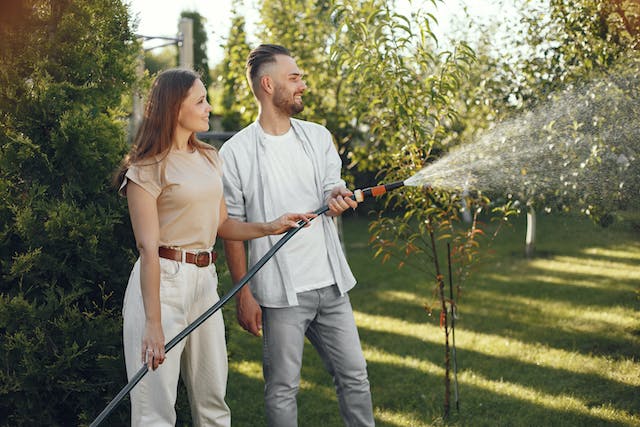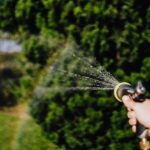The Different Automatic Watering Systems
Whether oscillating, circular, semi-circular, cannons, impulse, tripod, sled, or spike, sprinkler sprinklers (sometimes called ‘sprinklers’) allow large areas to be irrigated, just like rain would do. Natural.
Watering the Lawn
They are suitable for watering lawns, but when Water becomes more and more of a resource to be preserved, I invite you to let nature take its course. If the rains are sufficient, so much the better! If, on the other hand, your lawn turns yellow in the middle of summer, it’s not a big deal. As soon as the first autumn rains arrive, it will green up again. Each year, watering restrictions are regularly put in place, and they limit your room for maneuvers.


Watering System
This watering system can also be used for shrub and perennial beds. Still, it has the double disadvantage of watering the foliage (some plants do not like this and can then develop diseases) and not targeting the watered plants. Not all of them have the same needs, not to mention unwanted weeds, which grow even more if you provide them with Water. It is also necessary to have several sprinklers or to move them to cover the largest surfaces.
Micro-Sprinkler Watering

The principle is similar to the previous one, but the watering is more targeted here. A main network begins at the power source (tap, for example) and is then divided into secondary networks, each equipped with a micro-sprinkler, often fixed on a rod to be inserted into the ground.

Fine rain is thus delivered at low pressure and makes it possible to supply Water to large massifs. Adjustable (flow rate, watering radius), this system allows you to provide a more suitable and more targeted quantity of Water, but here again, all the plants are watered from above (including the unwanted ones), and the plants must be able to tolerate it without health risk.

Sprinkler watering has some advantages. Its installation is easy and requires a limited number of parts to assemble. The sprinklers, placed above ground, are also not contaminated by soil. Moving the different sprinklers is easy to implement. Simple or ‘T’ fittings allow the installation of a network adapted to the configuration of the area concerned.
Drip Watering
A main network, represented by a more or less rigid polyethylene pipe, is unrolled on the ground. Throughout the latter, flexible, smaller-diameter pipes are connected to drippers (different versions exist). Each dripper is positioned at the foot of the plant to be watered, and the flow rate, adjustable, allows you to provide the right quantity depending on the plant.
Also, operating at low pressure, drip irrigation allows very targeted watering and is easy to implement. “Ready to Install” kits are even available. Very adaptable, drip watering requires as many individual drippers as plants to be watered. Still, it avoids contact with the foliage and thus limits the development of certain diseases, such as mildew on tomatoes. Or masonic for rose bushes.
Micro-Porous Watering
This involves using a flexible hose with ‘pores’ that allow the water to ooze slowly along its entire length. Inexpensive, it is particularly easy to implement because it does not require any assembly. It would help if you unwound the hose in a line or by winding it between the plants. This system can work when connected to a water reserve located at a height to create sufficient pressure. However, the pipe can easily become clogged in direct contact with the earth. The flow is also sometimes irregular between the start and end of the circuit, and the installation of diversions further accentuates this problem. The quantity of water provided is difficult to assess and cannot be adjusted according to the specific needs of each plant. Finally, over time, these micro-perforated pipes may become brittle.
